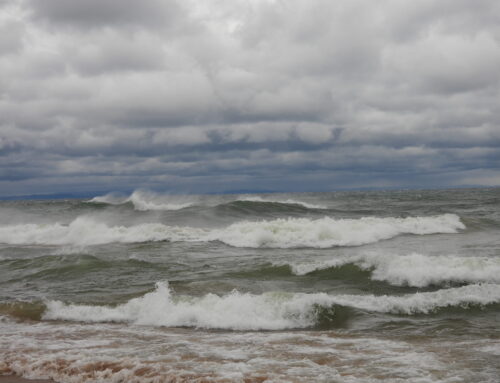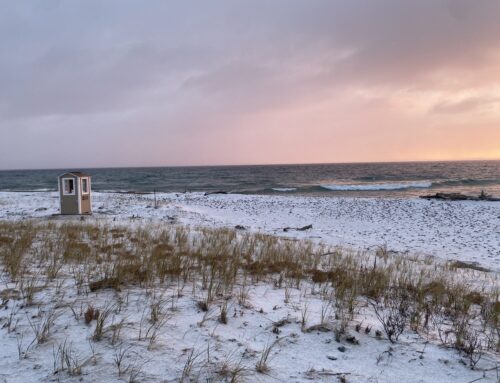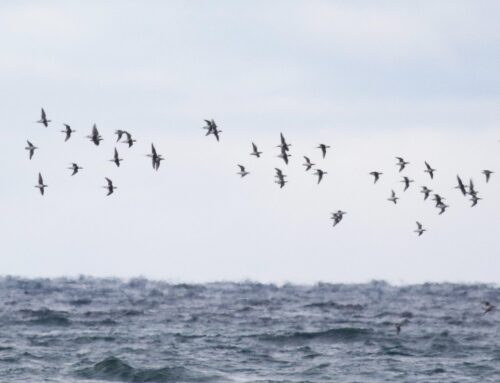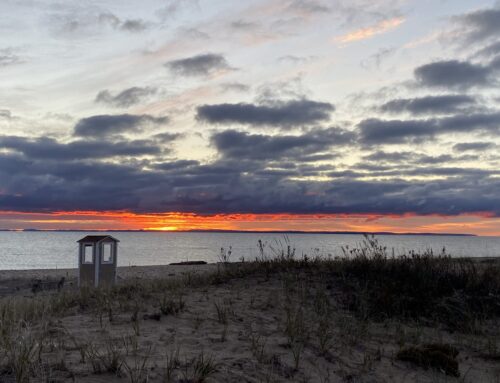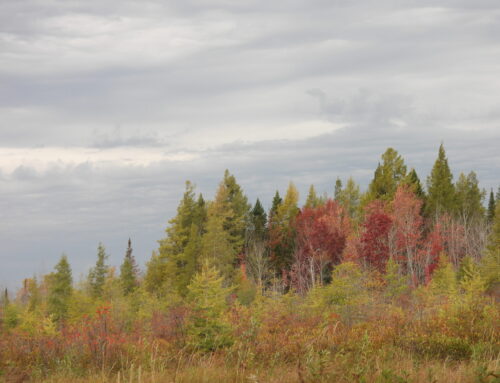The weather this week continued to be pretty mild with warm conditions and frequent south winds. Things got mixed up a bit on the 19th with a rush of 20-30mph NW winds, but even these conditions didn’t quite bring the scoters and Long-tailed Ducks we’ve been waiting for.
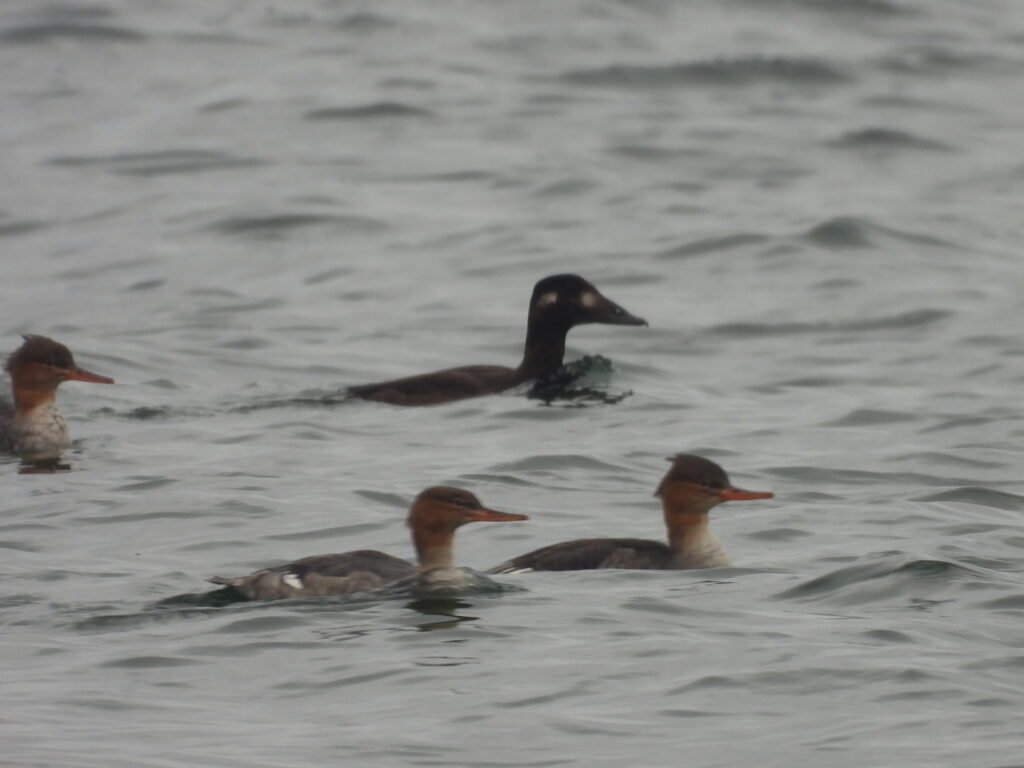
White-winged Scoter with Red-breasted Mergansers. Photo by Frank Fabbro
The best duck flight of the week was on the 15th with pleasant, calm conditions and good visibility. Scaup were still a consistent feature of the flights this week, whereas the massive early-season Redhead flocks have diminished. We ended the week with a total of about 1,700 scaup, and 900 of them all passed on the 15th. For the first time this season, we had a day where Lesser Scaup actually outnumbered the Greaters, with almost 300 of them flying by. Another staple of the duck flights this week has been Red-breasted Mergansers, with just over 1,000 birds. We are seeing Long-tailed Ducks and scoters of all three species, but nothing like the big flights Whitefish is known for just yet. On the 15th, about 300 scoters came past (242 White-winged, 27 Surf, 2 Black). Some years, Surf Scoter numbers peak back in early October, so it’s surprising to have seen so few by this point. Hopefully, some triple-digit movements are still coming our way. The dabbler component of duck flights has greatly diminished, but Mallards are still a frequent visitor.
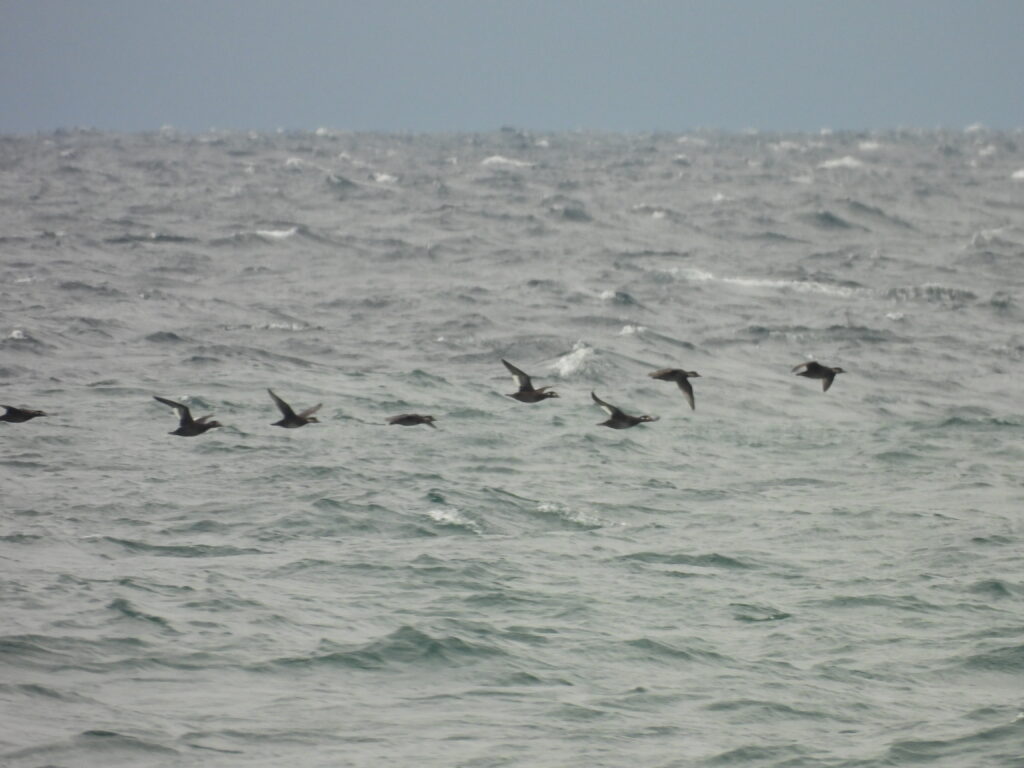
White-winged Scoters and Black Scoters. Photo by Frank Fabbro
One particular duck captured our hearts this week at the count. On the 17th, I was set up in the 20mph SE winds when an odd grunting sound made me look up from the scope. A single Red-breasted Merganser was waddling up the dune in our direction. Besides being up on dry land and walking towards a group of birders, the bird clearly had something else wrong. A knotted ball of fishing line and leader was wrapped tightly around its serrated orange bill. I ran over and carefully captured the bird, placing it in the waterbird count station to rest while Clay ran back to grab some scissors. Fortunately, there was no hook involved and the line hadn’t cut into the bill at all. Once freed the bird began aggressively nibbling at its captors. Not wanting to toss the clearly exhausted bird back into a choppy lake, Clay brought the bird over to the harbor for a release. At the sight of other mergansers, the bird zipped out into the calm water and started feeding. It was a good end to the story and a real treat to see the details of one up close as opposed to the many hundreds that migrate through my scope every day. The old waterbird shack had an impressive list of birds observed flying inside, but I have it on good authority that Red-breasted Merganser was not one of these species, even if this one is of dubious origin.
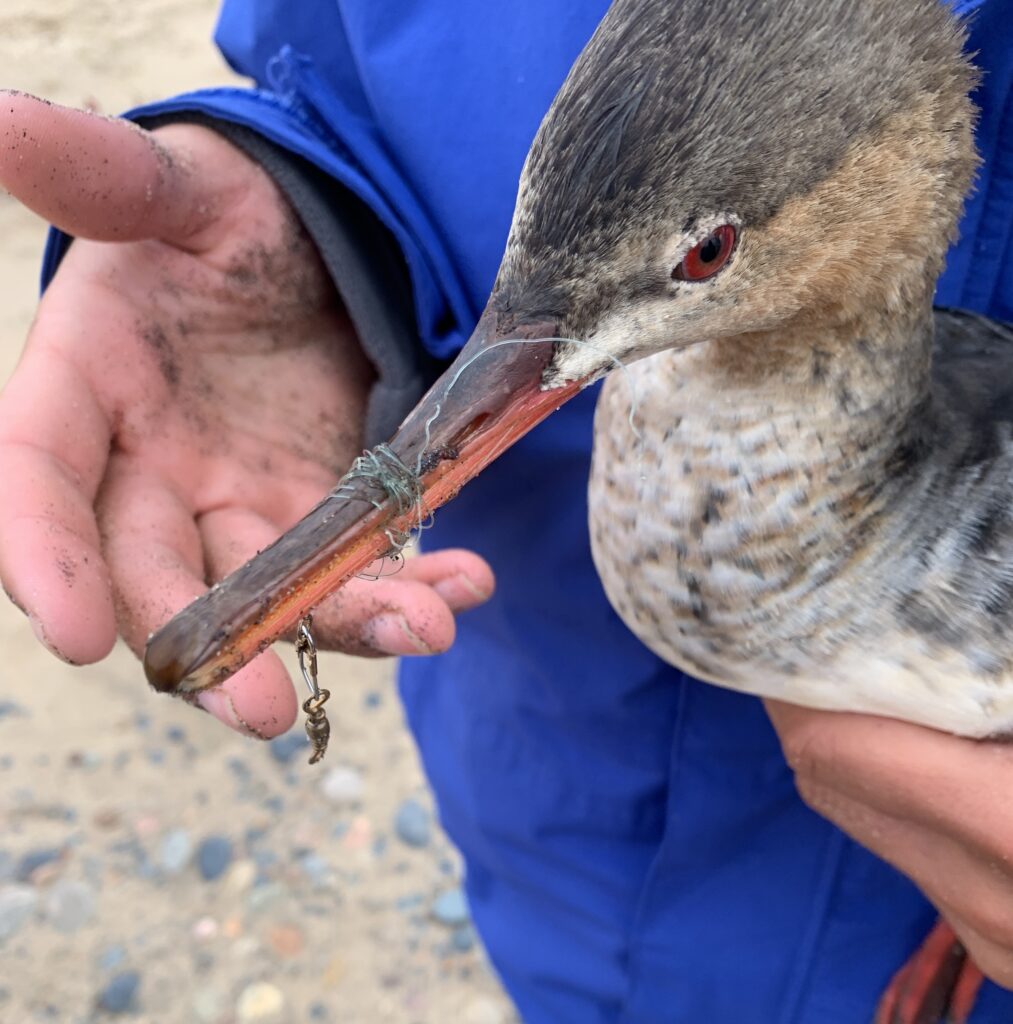
Red-breasted Merganser still entangled. Photo by Frank Fabbro
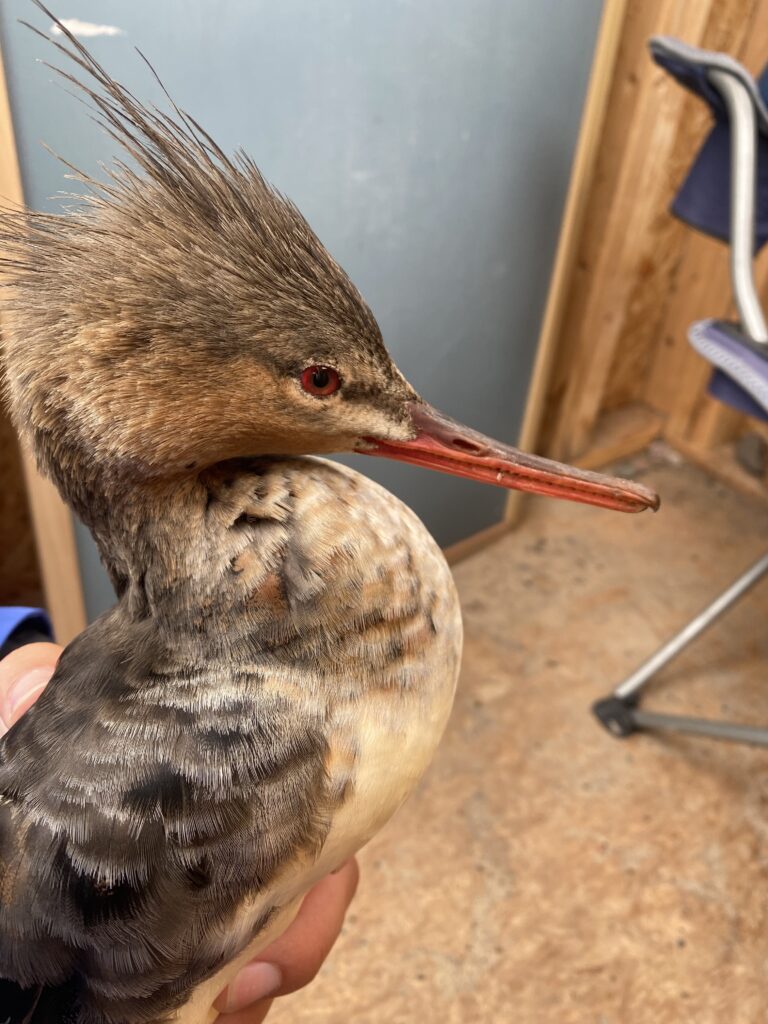
Red-breasted Merganser ready for release. Photo by Frank Fabbro
I mentioned last week how I was surprised to see so many Sabine’s all the way into mid-October, and this week they just kept coming. After sightings of a pair last week on the 14th, we had further sightings on the 15th, 16th, and 17th this week. Exactly how many birds this really represents is hard to know. I suspect, based on the behavior and flight direction that a few of the birds were repeat customers while others steadily moved from horizon to horizon with less feeding or doubling back. Bonaparte’s Gulls also had a bit of movement in the afternoon of the 19th, with more than 61 birds blasting by in the powerful NW winds.
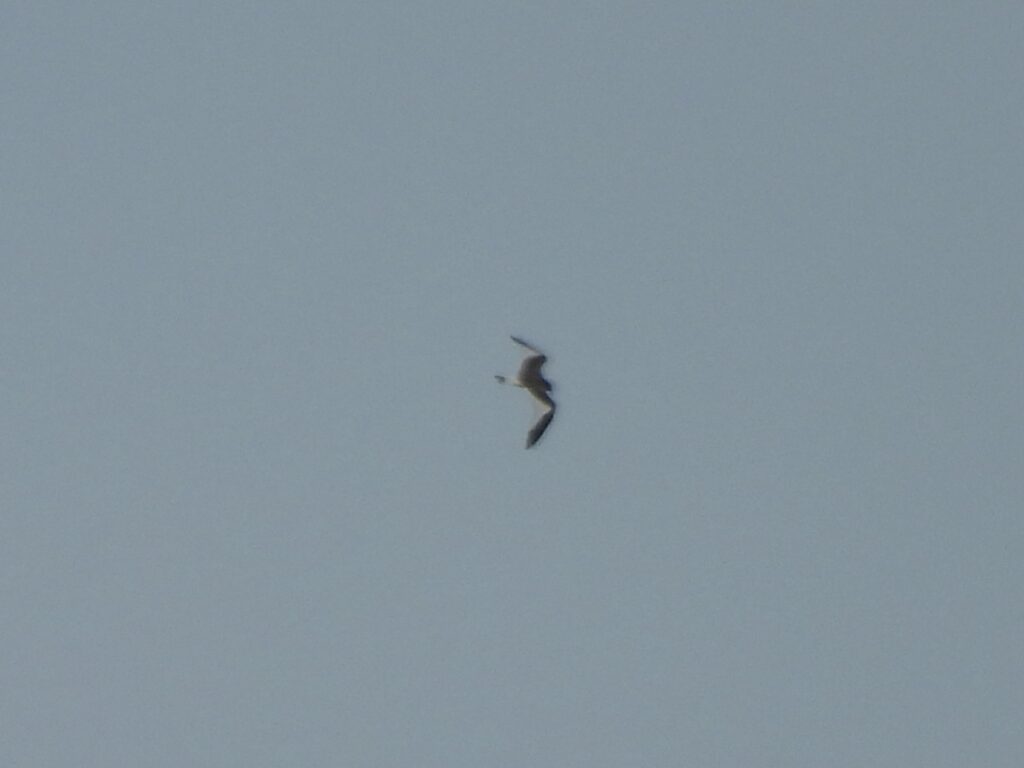
Distant Sabine’s Gull. Photo by Frank Fabbro
In strong winds or light winds, in south winds or north winds, the Common Loons were still moving this week. We had about 340 birds flying by with just the occasional pale winter and juvenile plumage Red-throated Loons mixed in.
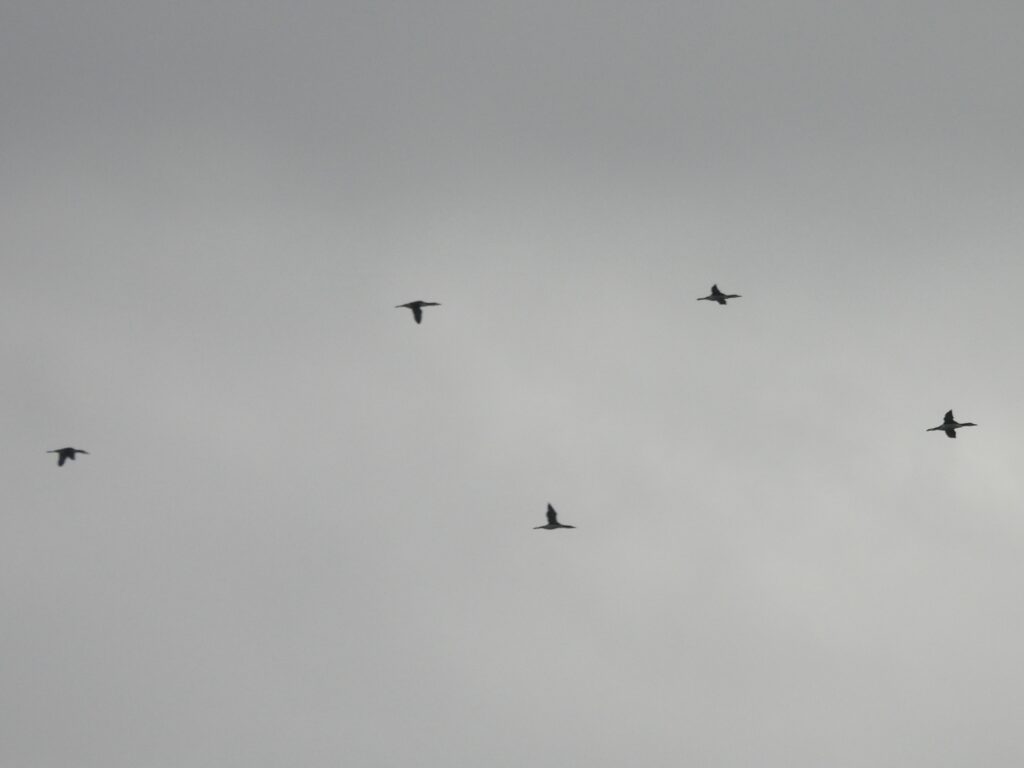
Common Loon flock. Photo by Frank Fabbro
Outside of waterbirds, there were a couple of highlights on the count this week. On the 18th, a day with light south winds, a big group of hawks started kettling around behind me over the point. Turning around to glass the white clouds revealed more and more circling specks every time I checked. By the end, there were more than 50 Red-tailed Hawks taking part in an impressive fall showing for this species.
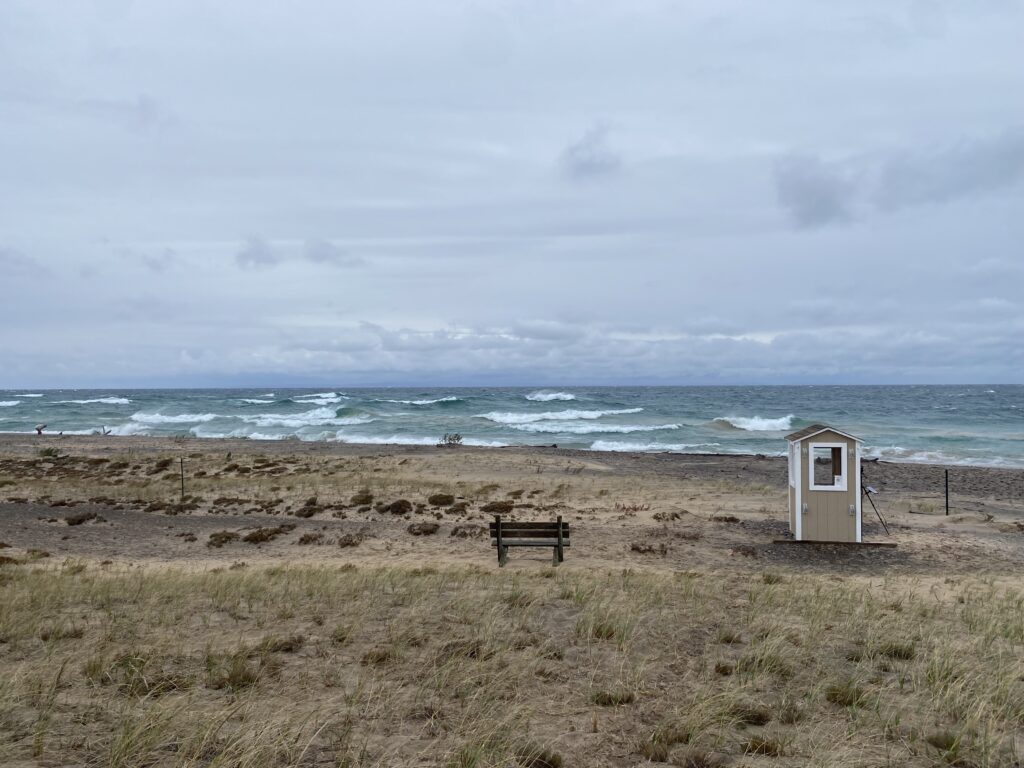
A real cold front is in the forecast for early next week, and I’m excited to see what birds it will bring our way. During late-season at Whitefish Point the possibilities are endless, from the odd waterbird (think Pacific Loon and Black-legged Kittiwake) or perhaps a rare flycatcher or solitaire! Time will only tell.
~Frank Fabbro, 2025 Fall Waterbird Counter
Featured Photo: Flock of Long-tailed Ducks
You can now see the waterbird count data on Trektellen! Check it out at trektellen.nl/count/view/4209.
You can keep up with the 2025 Fall Waterbird Count by reading Frank’s weekly blog posts and following WPBO’s social media (Facebook, Instagram, and X). The fall waterbird count runs August 15 through November 15.
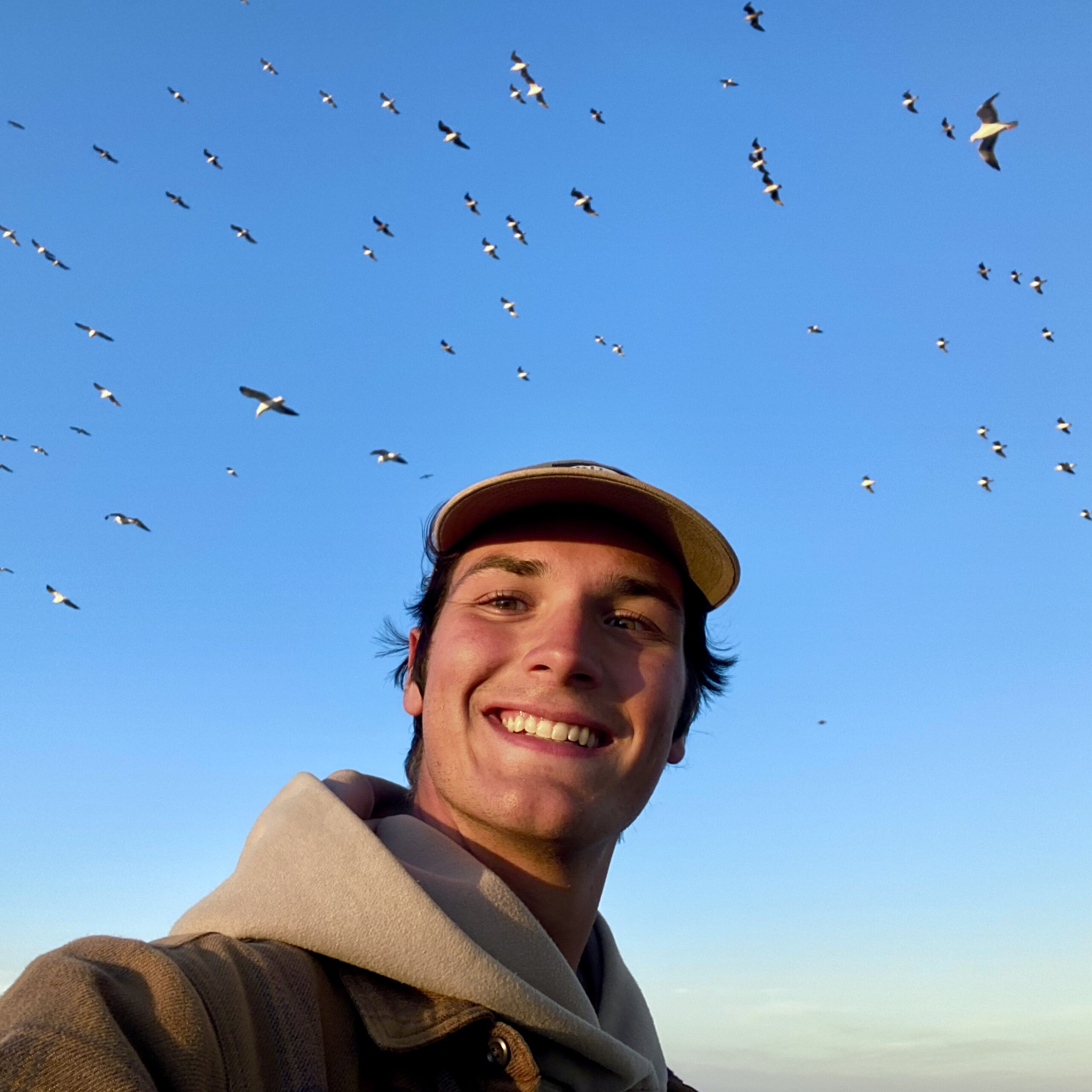
Frank Fabbro: 2025 Fall Waterbird Counter
Frank is an avid birder who was first introduced to the spectacle of bird migration along the Mississippi Flyway in his home state of Minnesota ten years ago. Since then, he has pursued his passion for birds, and the amazing places they inhabit, across the country and around the world. He studied Wildlife Biology and Landscape Restoration at the University of California, Davis, and since graduating has worked on a variety of bird-related projects, ranging from Spotted Owl surveys to prairie-chicken tagging and counting migrating seabirds. He’s excited to be back in the Northwoods, once again experiencing the excitement of fall migration along the shores of Lake Superior.


